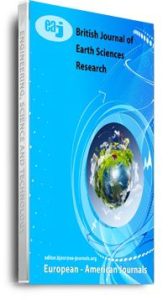The Niger Delta terrain is often prone to environmental degradation resulting from oil and gas spillage. This research aims to assess the environmental impact of oil and gas spillage on the soil of Warri, Southern Nigeria, by utilizing physicochemical properties, statistical analysis, and socioeconomic information to evaluate the impact of heavy metals in the study area. A total of six (6) soil samples were collected and examined with the aid of an atomic absorption spectrometer (AAS) using a procedure that adheres to World Health Organization (WHO) standards. Concentration levels of Sodium (Na), Potassium (K), Calcium (Ca), Magnesium (Mg), Exchangeable Acidity (EA), Exchangeable Cation Exchange Capacity (ECEC), Total Petroleum Hydrocarbons (TPH), Zinc (Zn), Copper (Cu), Iron (Fe), Cadmium (Cd), and Lead (Pb) were analyzed and found to range from (21.1-74.98) ppm, (23.46-105.57) ppm, (128-1442) ppm, (58.80-341.60) ppm, (0.25-13.50) ppm, (11.51-14.78) ppm, (11.30-226.34) mg/kg, (98.26-122.60) mg/kg, (10.10-18.43) mg/kg, (321.86-994.04) mg/kg, (0.26-0.50) mg/kg, (0.4-1.15) mg/kg, respectively. The research revealed that the soil pH ranged from highly acidic to slightly acidic, which can negatively affect nutrient availability and plant growth. The research also highlighted the detrimental impact of oil spillage on the health, livelihood, amenities, and socioeconomic state of affected communities. Agricultural produce, crop yield, and livestock production were negatively affected due to poor soil fertility and damage to water bodies. Basic amenities were polluted, leading to abandonment and contamination of drinking water. The social environment of these communities experienced setbacks in occupation, income, and education. The findings provide valuable insights into soil characteristics and contamination levels and also show that regular soil quality monitoring and assessment are essential to detect any degradation in soil quality in the examined area.
Keywords: Environmental degradation, Heavy Metal, Niger Delta terrain., Physiochemical properties, Soil impact

